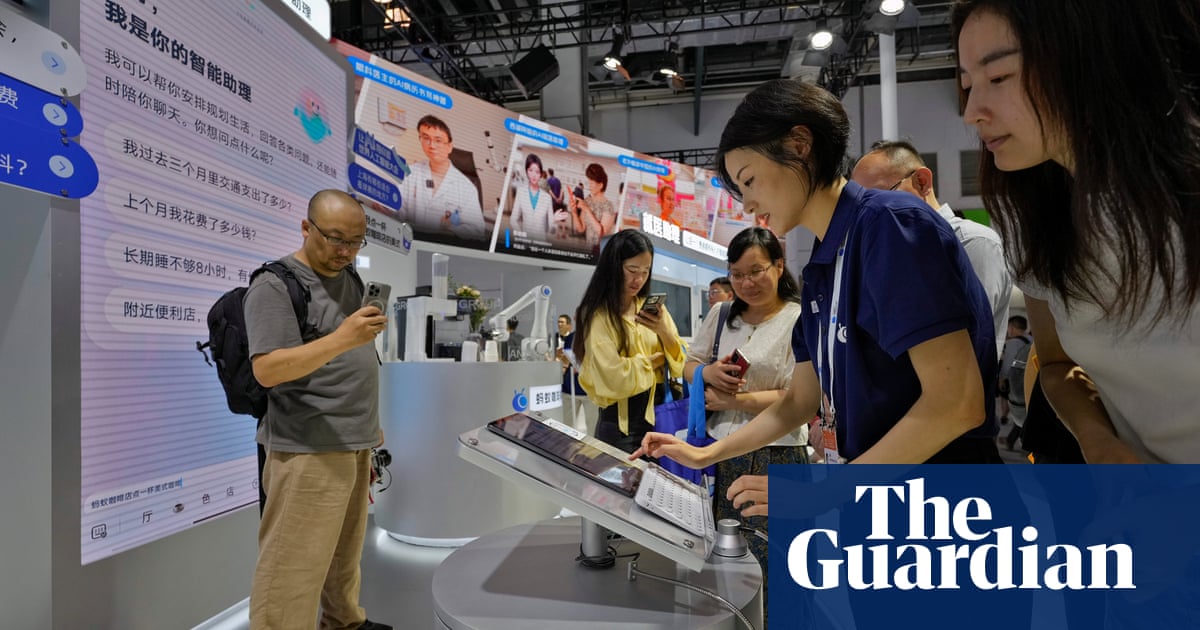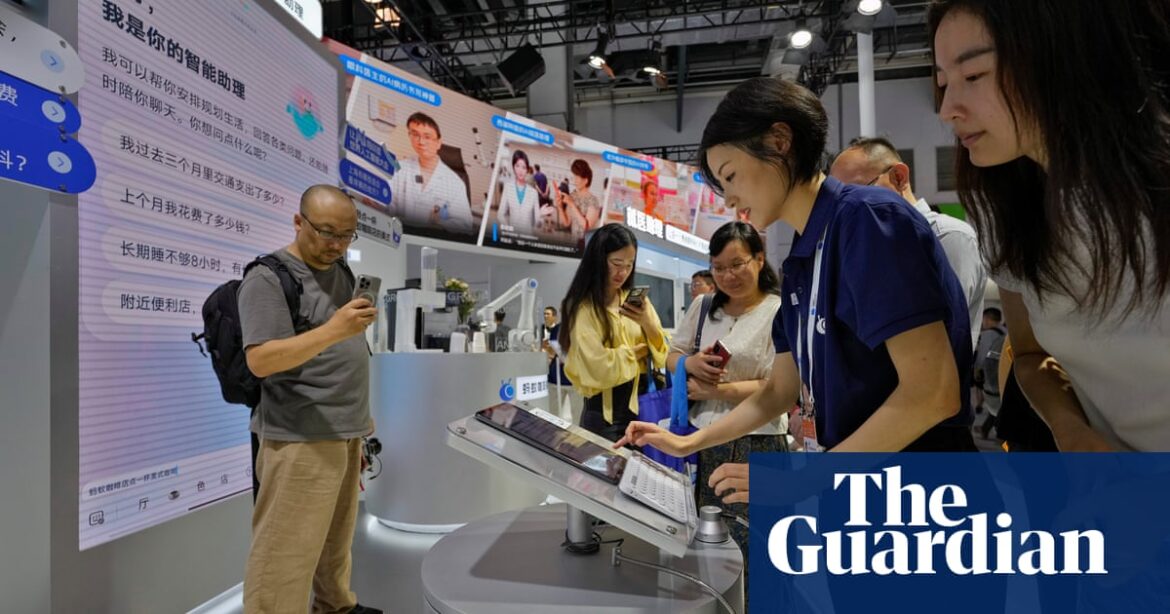
At the World AI Conference in Shanghai last week, one of China’s leading artificial intelligence companies, SenseTime, unveiled its latest model, SenseNova 5.5.
The model showed off its ability to identify and describe a stuffed toy puppy (wearing a SenseTime cap), offered feedback on a drawing of a rabbit, and instantly read and summarised a page of text. According to SenseTime, SenseNova 5.5 is comparable with GPT-4o, the flagship artificial intelligence model of the Microsoft-backed US company OpenAI.
If that wasn’t enough to entice users, SenseTime is also giving away 50m free tokens – digital credits for using the AI – and says that it will deploy staff to help new clients migrate from OpenAI services to SenseTime’s products for free.
Chinese attempts to lure domestic developers away from OpenAI – considered the market leader in generative AI – will now be a lot easier, after OpenAI notified its users in China that they would be blocked from using its tools and services from 9 July.
“We are taking additional steps to block API traffic from regions where we do not support access to OpenAI’s services,” an OpenAI spokesperson told Bloomberg last month.
OpenAI has not elaborated about the reason for its sudden decision. ChatGPT is already blocked in China by the government’s firewall, but until this week developers could use virtual private networks to access OpenAI’s tools in order to fine-tune their own generative AI applications and benchmark their own research. Now the block is coming from the US side.
Rising tensions between Washington and Beijing have prompted the US to restrict the export to China of certain advanced semiconductors that are vital for training the most cutting-edge AI technology, putting pressure on other parts of the AI industry.
The OpenAI move has “caused significant concern within China’s AI community” said Xiaohu Zhu, the founder of the Shanghai-based Centre for Safe AGI, which promotes AI safety, not least because “the decision raises questions about equitable access to AI technologies globally”.
But it has also created an opportunity for domestic AI companies such as SenseTime, which are scrambling to hoover up OpenAI’s rejected users. After warnings about OpenAI’s decision circulated last month, Baidu offered 50m free tokens for its Ernie 3.5 AI model, as well as free migration services, while Zhipu AI, another local company, offered 150m free tokens for its model. Tencent Cloud is giving away 100m free tokens for its AI model to new users until the end of July. “Competitors are offering migration pathways for former OpenAI users, seeing this as an opportunity to expand their user base,” said Zhu.
One consequence of OpenAI’s decision may be that it accelerates the development of Chinese AI companies, which are in tight competition with their US rivals, as well as each other. China is estimated to have at least 130 large language models, accounting for 40% of the world’s total and second only to the US. But while US companies such as OpenAI have been at the cutting edge of generative AI, Chinese companies have been engaged in a price war that some analysts have speculated may harm their profit margins and their ability to innovate. Still, Winston Ma, a professor at New York University who writes about Chinese technology, said OpenAI’s departure from China comes “at a time when Chinese big tech players are closing on performance gap with OpenAI and are offering these Chinese LLM models essentially free”.
after newsletter promotion
“OpenAI’s departure is a short-term shock to the China market, but it may provide a long-term opportunity for Chinese domestic LLM models to be put to the real test,” said Ma. Until now, Chinese companies have focused on the commercialisation of large language models rather than advancing the models themselves, he added.
Chinese commentators have been keen to brush off the impact of OpenAI’s decision. State media outlet the Global Times said it was “a push from the US to hamper China’s technology development”. Pan Helin, a digital economy researcher at Zhejiang University who sits on a government technology committee, described the development as “a good thing for China’s large-scale model independence and self-reliance”, according to Chinese media.
But there are signs that the US restrictions on China’s AI industry are starting to bite. The online video giant Kuaishou recently had to restrict the number of people who could access its new text-to-video AI model, Kling, because of a lack of computing capacity caused by a shortage of chips, according to a report in The Information. And there is now a booming hidden market for US semiconductors, as companies find ways to circumvent the sanctions. Being blocked from US software may inspire similar creativity.
Source: theguardian.com



